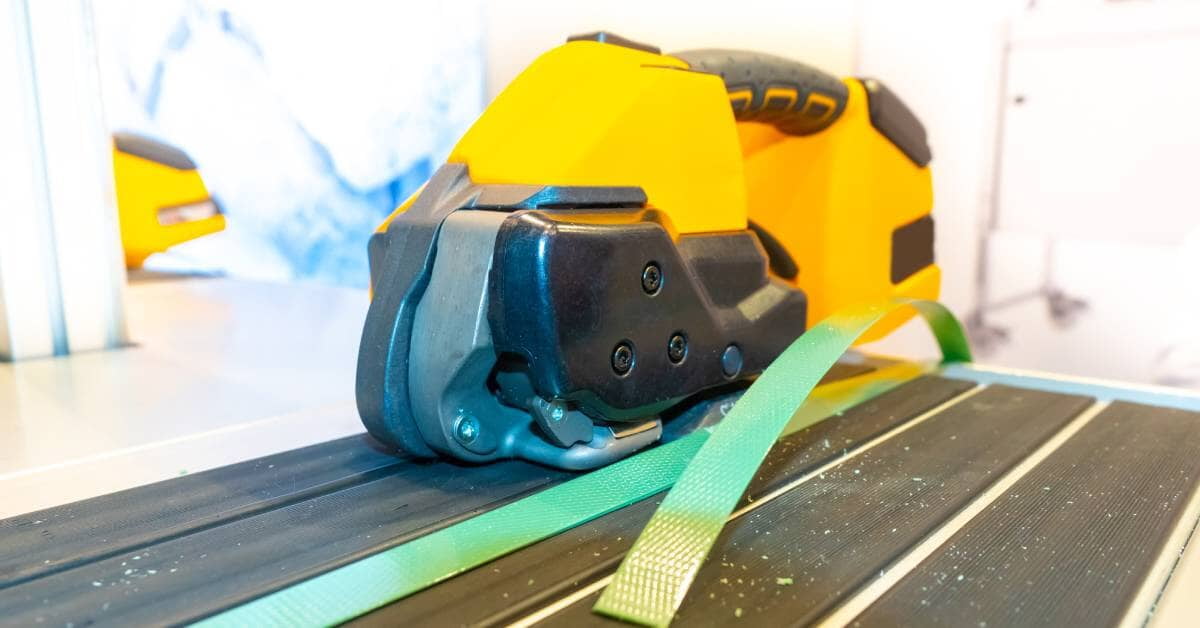
Banding and strapping are two fundamental methods for securing loads and reinforcing packaging. While they may seem similar, these methods have distinct differences that make them suitable for various applications. Banding involves wrapping a flexible material around items to hold them together or secure them to a pallet. It is often used for lighter loads and delicate products that require gentle handling.
On the other hand, strapping uses more rigid materials to secure heavier loads tightly. Strapping is designed to provide robust support, ensuring that items stay in place during transport. Compare materials, applications, and other key considerations to understand the difference between banding and strapping.
Materials Used for Banding and Strapping
Plastic bands are a popular choice for banding due to their flexibility and lightweight nature. They are ideal for bundling items such as newspapers, boxes, and fragile goods. Paper bands offer an eco-friendly alternative, providing sufficient strength for light-duty applications.
In contrast, strapping materials include steel, polyester (PET), and polypropylene (PP). Steel strapping is known for its high tensile strength, making it suitable for securing heavy loads, such as construction materials. Polyester and polypropylene strapping are commonly used in medium- to heavy-duty applications, offering a balance of strength and flexibility.
Purposes and Applications
Banding is often used to bundle lightweight items for easy handling and display. It is widely utilized in industries like print media, food packaging, and retail. By holding items together without exerting excessive pressure, banding ensures that products remain intact and undamaged.
Strapping serves a critical role in securing heavy or bulky loads during transportation and storage. Strapping provides the necessary stability to prevent load shifting and potential product damage for sectors such as logistics, manufacturing, and construction.
Equipment and Tools
Banding tools include manual tensioners and sealers, which are used to apply and secure the bands around the items. For larger operations, automatic banding machines can streamline the process, increasing efficiency and consistency. These tools achieve the right tension without damaging the products.
Strapping equipment, such as tensioners, sealers, and buckles, work together to create a secure hold. For more demanding applications, pneumatic or battery-powered strapping tools provide greater tension and speed. These tools apply the strapping evenly and securely, preventing any slippage during transport.
Best Practices and Other Considerations
Understanding the difference between banding and strapping helps businesses choose the right method and materials. They must consider factors such as load weight, product fragility, and transport conditions. Lightweight, delicate items are best suited for banding, which can prevent damage while keeping the items together. Conversely, heavy loads may require the added strength of strapping to ensure safe transportation.
Packaging managers should also consider environmental conditions when selecting banding or strapping materials. For instance, extreme heat or cold can affect the elasticity and durability of the materials used. Additionally, exposure to elements such as rain, sunlight, or salty air can cause corrosion or weaken any banding and strapping materials not suited for these conditions.
Selecting the appropriate method for securing loads is crucial for maintaining product integrity and safety during transport and storage. Thanks to their specialized materials and application equipment, banding and strapping offer distinct advantages depending on the application.
